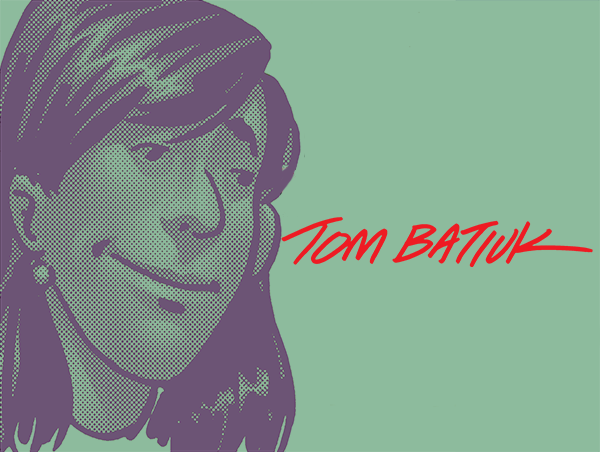It was these two men Jay Kennedy and Ted Hannah who were crucial in helping me create a space apart on the comics page, where I could tell the kind of stories I wanted to tell and to develop an expectation with the readers for that type of work. And, since the stories I wanted to tell were illustrated stories, we are brought—almost as if I’d planned it—to:
The Third Cartooning Commandment: Thou shalt make the cartoon drawings as elementary and as simple as possible.
I’d like to say “don’t get me started,” but I need to finish the intro, so bombs away. As the newspapers struggled, they continued, as I alluded to earlier, to take the most unique thing their papers had to offer and make it even less desirable. So they began to steadily reduce the size of the comics they carried. Since we know from the First Cartooning Commandment that comics are only supposed to be funny, the art in comic strips, in response, became less detailed and more and more spare. The elegant and deceptive simplicity of Charles Schulz’s Peanuts art was extrapolated by others to mean merely simple, and so the incredible shrinking comic strip emerged. As cartoonists accommodated their art to the smaller size, the newspapers jumped on the opportunity afforded by the diminished art to make the strips even smaller, and a vicious cycle began that continues to this day. As I’d described in Volume 8 of this series, Chuck Ayers, my partner in crime on Crankshaft, had come on board to pencil Funky, and working with Chuck opened up the playbook for me. Instead of the artwork in Funky becoming simpler, it cast an eye to the comic strip’s past and began heading upstream in the opposite direction, becoming more cinematic and complex. Also, in my comic book reading (are you paying attention, IRS?), I was starting to see how computer coloring was beginning to change the look of the comic pamphlets. As the change in my writing had darkened my palette, I wanted the actual color palette to darken as well to reflect those changes. The color charts provided by the Sunday comics printers were pretty limited, sticking primarily (intended) to the light-bright-cheerful-sunny-skies range, whereas computers seemed to provide the opportunity to make use of every color imaginable.
From The Complete Funky Winkerbean Volume 9






